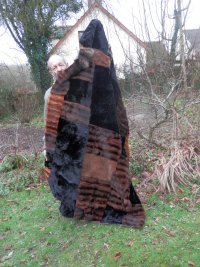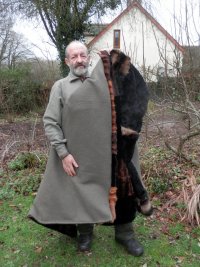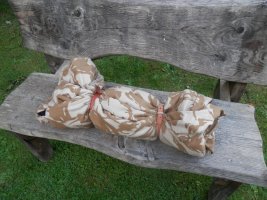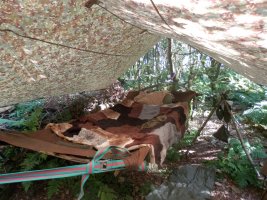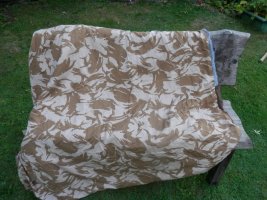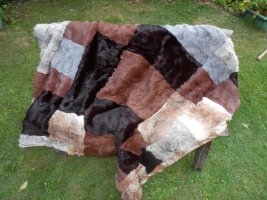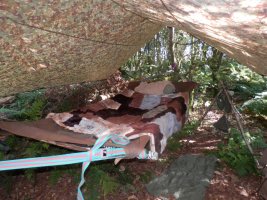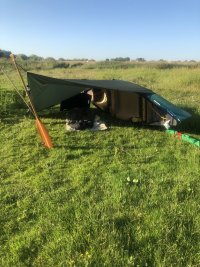I slowly ask myself what we are talking about here.
A plastic free portable equipment usually consists of one or two large wool blankets that you wrap around you how it is shown in the video above.
Over it you build a cotton tarp or tent.
If it's a good one you also just can spread it out over you if you don't expect much rain.
Under it you put collected twigs.
(Military used straw).
In between you can put a sheep skin.
Alternatively you can wear a thick wool coat or a sheep skin coat and wrap a wool blanket just around your legs and tuck it into the coat that it looks approximately like your grandma in coat and skirt in winter times. (A sheep skin bag for the legs works surely well too.)
That have been the both usual options how it was done before they developed the plastic closed cell foam roll insulation mat and the sleeping bag.
The bed roll that already contains canvas bivvy bag and wool blankets was used by horsemen, not on foot.
All that is heavy, bulky and everything else than warm if you compare it with the same amount of modern plastic equipment, regarding volume and especially weight.
With a wool coat, a wool blanket and additional a sheep skin under you, you sleep by the fire if it is cold and usually care for it like this:
In the evening you burn a lot of beach and oak if possible to create good embers, put in the end thick logs onto it and sleep like that in a distance of approximately 1 metre for approximately 3 hours.
You awake because it gets cold, put new wood onto the fire, that you stored next to your head, and sleep another 90 minutes, awake put new wood on the fire and sleep another 90 minutes. And perhaps ones more if you need the usual 7 1/2 hours sleep and not just 6.
The 90 minutes is your usual sleep circle.
If you change in your bed the side you also do it after 3, 4 1/2, and 6 hours. All 90 minutes you nearly awake, some go after 4 1/2 hours to the loo.
If you get the right fire size and the right wood with a bit experience you can sleep like this comfortable.
I don't really wake up if I just put a few sticks onto the fire. But that's of course because I am used to it and don't get excited about the fact that I sleep by the fire.
Well, and in my modern military sleep system I just close it from inside and sleep like in a bed in a heated room.
That's why the NATO armies issue that and not the wool coat and wool blanket anymore that served well until 1945.
If you search for a really comfortable solution for a good nights sleep for 8 hours like at home in your bed that you easily can carry, let's talk about sleeping bags and not about historic equipment.
I can sleep comfortably with historic equipment. But comfort is relative.
I also can sit comfortably on a stone.
Of course a Snugpak Special Forces or Carinthia military sleep system is far more comfortable.
But I admit that the usual far too tight civil sleeping bags also for me aren't really comfortable. That's why I use military sleeping bags.
So once more:
What are we talking about here?
What do you want to do with your sleep system in which weather conditions in which area? How tall are you? Rather thick, thin or normal?
I am really the last who will write against an old school equipment and sleeping by the fire. But I think that you have the wrong sleeping bag and perhaps the wrong insulation mat and just need a new professional sleep system.
But yes, buy a sheep hide and a large wool blanket and try that out! Why not?
In your boat that good for sure! So no fault to get it.
But for hiking the modern equipment is more comfortable, my dear. You just need the right one in the right size!

